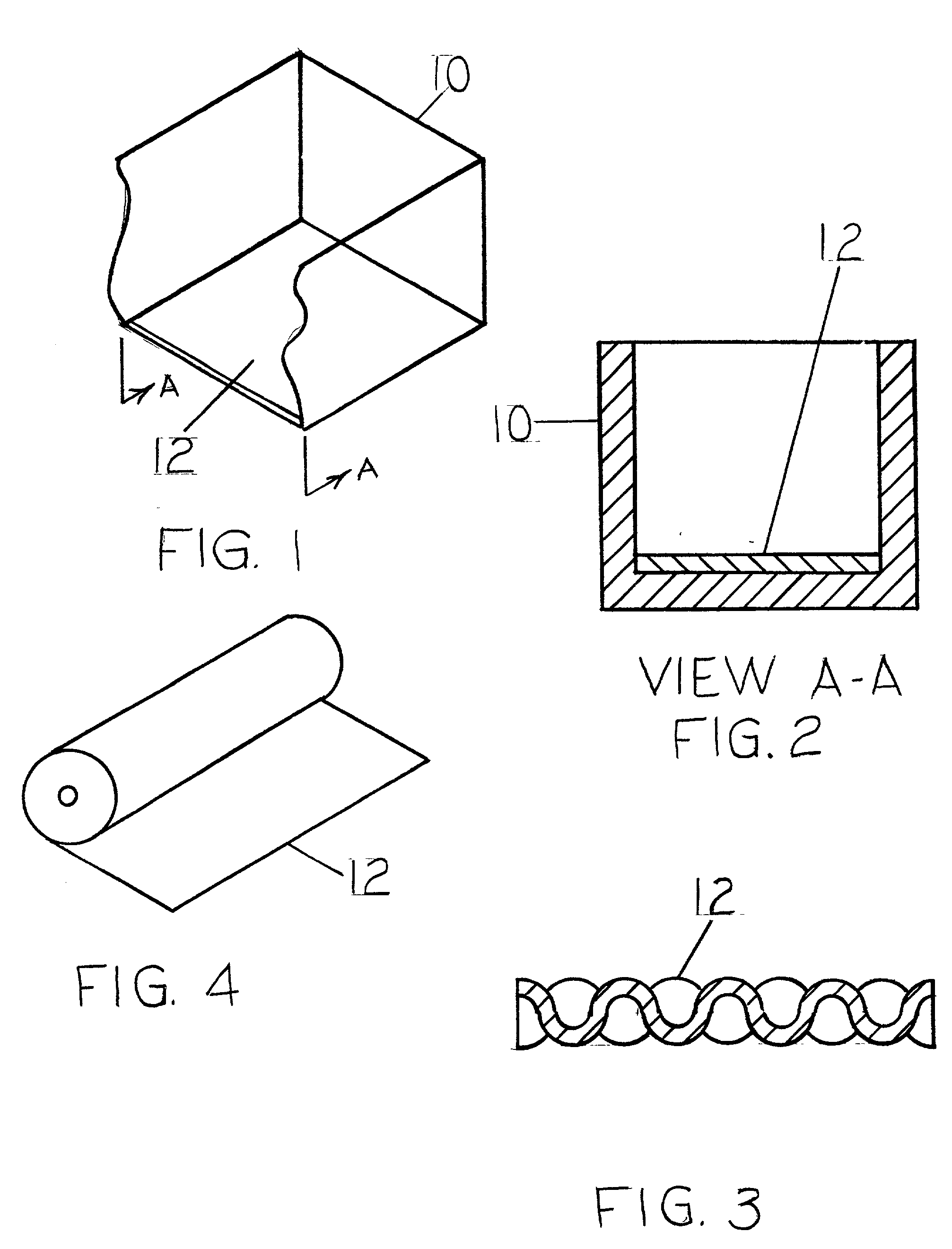Method for producing odor and moisture absorbing pad for animals using protective containerboard
a technology of protective container board and odor control, which is applied in the field of disposable pads, can solve the problems of odor control, time it takes to clean the cage or container, and is more flammable than desired, and achieves the effects of low production cost, high speed, and convenient disassembly and assembly
- Summary
- Abstract
- Description
- Claims
- Application Information
AI Technical Summary
Benefits of technology
Problems solved by technology
Method used
Image
Examples
Embodiment Construction
[0030] There are various possibilities with regard to shape and finish of the pad. For commercial applications where the animals are kept in long rows of cages with catch containers underneath, the pad material would be made in a roll form, as shown in FIG. 4, instead of a cut to size rectangle.
[0031] FIG. 3 shows an enlarged end view of a pad with an embossed surface. Passing the pad material between two mated male and female rollers produces this embossed surface. The embossed surface being rougher allows a retile to move more easily across the surface without slipping.
DETAILED DESCRIPTION OF THE DRAWINGS AND OPERATION OF THE INVENTION
[0032] Referring now in more detail and by reference characters to the drawings FIG. 1 shows a typical animal container 10. Some are made from clear plastic or glass and some are made from wire. These types are used for easy viewing of the animal inside. On the bottom of container 10 is placed pad 12 consisting of layered embedded carbon paper.
[0033]...
PUM
 Login to View More
Login to View More Abstract
Description
Claims
Application Information
 Login to View More
Login to View More - R&D
- Intellectual Property
- Life Sciences
- Materials
- Tech Scout
- Unparalleled Data Quality
- Higher Quality Content
- 60% Fewer Hallucinations
Browse by: Latest US Patents, China's latest patents, Technical Efficacy Thesaurus, Application Domain, Technology Topic, Popular Technical Reports.
© 2025 PatSnap. All rights reserved.Legal|Privacy policy|Modern Slavery Act Transparency Statement|Sitemap|About US| Contact US: help@patsnap.com


